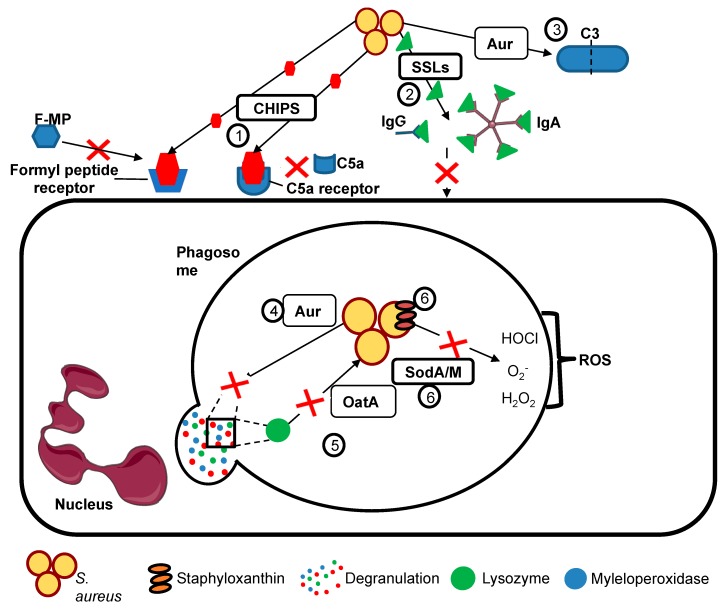Figure 1.
S. aureus avoids engulfment and killing by neutrophils. S. aureus avoids killing by neutrophils by preventing phagocytosis and resisting internal killing mechanisms using a number of strategies, including: (1) Neutrophil chemotaxis is inhibited by chemotaxis inhibitory protein of S. aureus (CHIPS), which prevents binding of chemoattractants such as activated complement and bacterial formylated peptides (F-MP) to neutrophil C5a and formyl peptide receptors. (2) Staphylococcal superantigen-like proteins (SSLs) bind IgG and IgA preventing their adherence to neutrophils and hence blocking opsonisation. Aureolysin prevents (3) complement activation by cleaving C3, blocking C3a activation. Granule-derived antimicrobial peptides such as lysozyme or MPO myeloperoxidase are also cleaved by (4) aureolysin (Aur). (5) S. aureus is protected from degradation by lysozymes through modification of peptidoglycan by O-acetyltransferase (OatA). (6) There are multiple systems to combat ROS including antioxidants such as SodA/SodM and Staphyloxanthin, which protect staphylococcus from the oxidative stress due to ROS. This figure was created using Servier Medical Art templates, which are licensed under a Creative Commons Attribution 3.0 Unported License; https://smart.servier.com.

